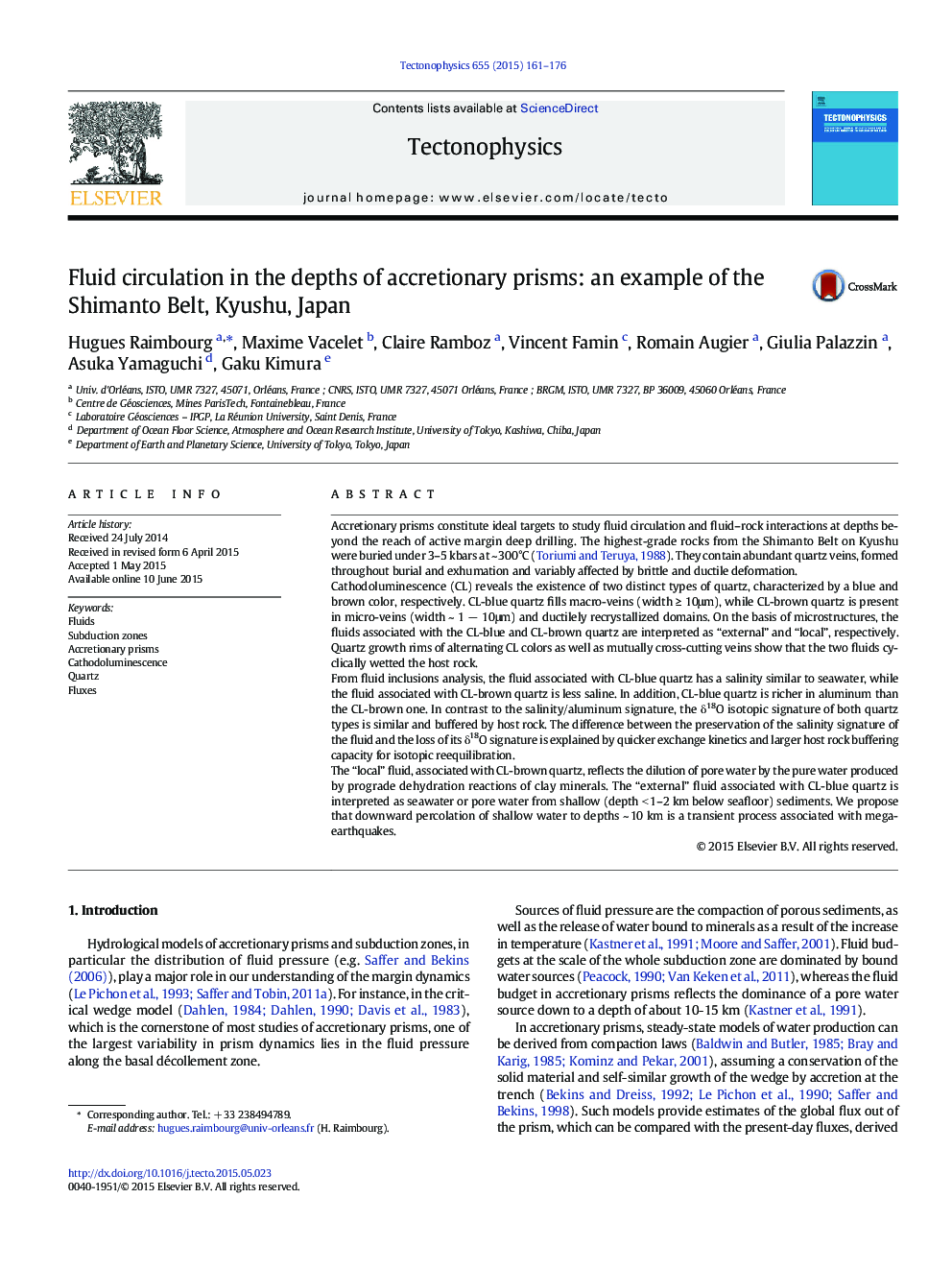| کد مقاله | کد نشریه | سال انتشار | مقاله انگلیسی | نسخه تمام متن |
|---|---|---|---|---|
| 4691588 | 1636740 | 2015 | 16 صفحه PDF | دانلود رایگان |

• Two distinct fluids unraveled from deep quartz veins in a fossil accretionary prism.
• Local fluid intermittently replaced by pulses of external fluid with higher salinity.
• δ18O signature of the fluid is lost by reequilibration; salinity and aluminum signatures much more persistent.
• The source of the saline, external fluid is shallow water percolated to depth.
Accretionary prisms constitute ideal targets to study fluid circulation and fluid–rock interactions at depths beyond the reach of active margin deep drilling. The highest-grade rocks from the Shimanto Belt on Kyushu were buried under 3–5 kbars at ~ 300°C (Toriumi and Teruya, 1988). They contain abundant quartz veins, formed throughout burial and exhumation and variably affected by brittle and ductile deformation.Cathodoluminescence (CL) reveals the existence of two distinct types of quartz, characterized by a blue and brown color, respectively. CL-blue quartz fills macro-veins (width ≥ 10μm), while CL-brown quartz is present in micro-veins (width ~ 1 − 10μm) and ductilely recrystallized domains. On the basis of microstructures, the fluids associated with the CL-blue and CL-brown quartz are interpreted as “external” and “local”, respectively. Quartz growth rims of alternating CL colors as well as mutually cross-cutting veins show that the two fluids cyclically wetted the host rock.From fluid inclusions analysis, the fluid associated with CL-blue quartz has a salinity similar to seawater, while the fluid associated with CL-brown quartz is less saline. In addition, CL-blue quartz is richer in aluminum than the CL-brown one. In contrast to the salinity/aluminum signature, the δ18O isotopic signature of both quartz types is similar and buffered by host rock. The difference between the preservation of the salinity signature of the fluid and the loss of its δ18O signature is explained by quicker exchange kinetics and larger host rock buffering capacity for isotopic reequilibration.The “local” fluid, associated with CL-brown quartz, reflects the dilution of pore water by the pure water produced by prograde dehydration reactions of clay minerals. The “external” fluid associated with CL-blue quartz is interpreted as seawater or pore water from shallow (depth < 1–2 km below seafloor) sediments. We propose that downward percolation of shallow water to depths ~ 10 km is a transient process associated with mega-earthquakes.
Journal: Tectonophysics - Volume 655, 1 August 2015, Pages 161–176